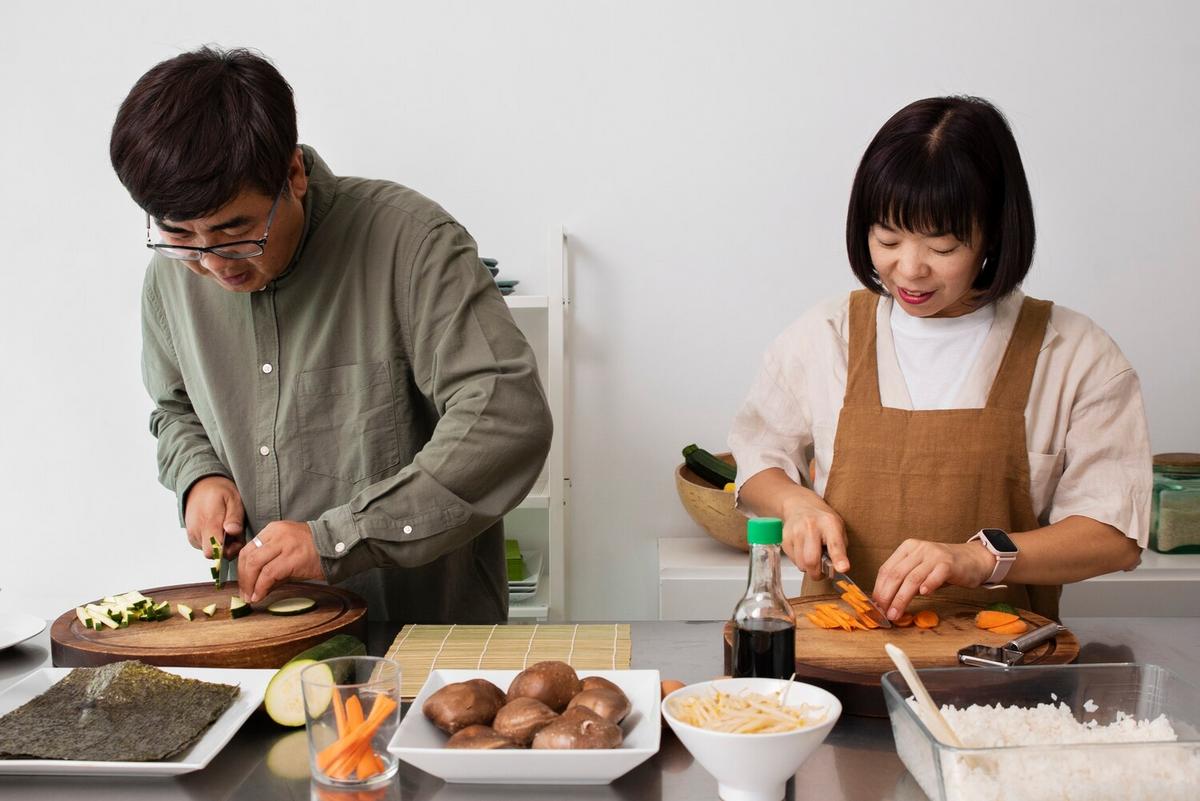Are you intrigued by the vibrant and flavorful world of Korean cuisine but don’t know where to start? Korean recipes for beginners are an excellent gateway to discovering the rich culinary traditions of Korea. With a little guidance and a few essential ingredients, you can create delicious and authentic Korean meals right in your kitchen.
Getting Started with Korean Cooking
Diving into Korean cooking can seem daunting, but with a few basic recipes and ingredients, you can master the essentials quickly. Korean cuisine is known for its bold flavors, fermented condiments, and a balance of sweet, savory, and spicy tastes.
Essential Ingredients
Before you start, make sure you have some key ingredients on hand:
- Gochujang: A spicy red chili paste.
- Gochugaru: Korean red chili flakes.
- Soy Sauce: Essential for many Korean dishes.
- Sesame Oil: Adds a nutty flavor.
- Kimchi: Fermented vegetables, often cabbage, that are a staple in Korean cuisine.
- Rice: Short-grain rice is preferred.
- Garlic and Ginger: Base flavors for many dishes.
- Scallions: Often used as a garnish or flavor enhancer.
Easy Korean Recipes for Beginners
Here are a few beginner-friendly Korean recipes that are both delicious and simple to make:
1. Bibimbap (Mixed Rice Bowl)
Bibimbap is a colorful and nutritious dish that combines rice, vegetables, an egg, and gochujang. It’s easy to customize with your favorite veggies and proteins.
2. Bulgogi (Marinated Beef)
Bulgogi is a popular Korean BBQ dish that features thinly sliced beef marinated in a savory-sweet sauce made of soy sauce, sugar, sesame oil, garlic, and pepper.
3. Kimchi Jjigae (Kimchi Stew)
This comforting stew is made with kimchi, tofu, pork (optional), and various vegetables. It’s a great way to use up old kimchi.
4. Japchae (Stir-Fried Glass Noodles)
Japchae features sweet potato noodles stir-fried with vegetables and sometimes meat, flavored with soy sauce and sesame oil.
Expert Opinions and Research
According to Korean culinary experts, the balance of flavors in Korean cuisine is what makes it unique and appealing. “Korean food is all about harmony between flavors and textures,” says a renowned chef with extensive experience in Korean cooking.
Research shows that Korean cuisine is not only delicious but also healthy. A study published in the Nutrition Journal highlighted the health benefits of fermented foods like kimchi, which is rich in probiotics and vitamins.
Personal Anecdote
I remember the first time I tried making kimchi at home. It was a messy but rewarding experience. The satisfaction of tasting homemade kimchi, knowing it was packed with flavor and health benefits, was truly incomparable.
Actionable Tips
- Practice Mise en Place: Prepare all your ingredients before you start cooking to make the process smoother.
- Start Simple: Begin with basic recipes and gradually try more complex dishes as you become more comfortable with the ingredients and techniques.
- Invest in Good Equipment: A sturdy wok or skillet and a rice cooker can make a huge difference in your cooking experience.
FAQs
Frequently Asked Questions
What is the easiest Korean dish to start with?
Bibimbap is a great starter dish because it’s easy to make and highly customizable.
Where can I buy Korean ingredients?
You can find Korean ingredients at Asian grocery stores or online retailers.
Is Korean food healthy?
Yes, many Korean dishes are rich in vegetables, lean proteins, and fermented foods, making them nutritious and beneficial for gut health.
Conclusion
Exploring Korean recipes for beginners is a fantastic way to introduce yourself to a diverse and flavorful cuisine. With a few essential ingredients and some easy-to-follow recipes, you’ll be well on your way to mastering the art of Korean cooking. So, roll up your sleeves, gather your ingredients, and embark on this delicious culinary journey. Happy cooking!

Leave a Reply